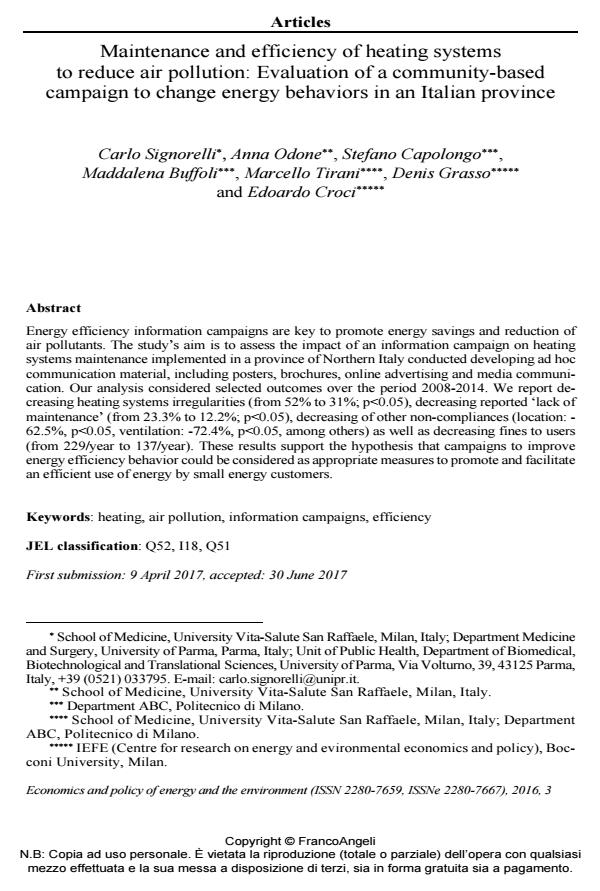Maintenance and efficiency of heating systems to reduce air pollution: Evaluation of a community-based campaign to change energy behaviors in an Italian province
Journal title ECONOMICS AND POLICY OF ENERGY AND THE ENVIRONMENT
Author/s Carlo Signorelli, Anna Odone, Stefano Capolongo, Maddalena Buffoli, Marcello Tirani, Denis Grasso, Edoardo Croci
Publishing Year 2017 Issue 2016/3
Language English Pages 10 P. 89-98 File size 161 KB
DOI 10.3280/EFE2016-003008
DOI is like a bar code for intellectual property: to have more infomation
click here
Below, you can see the article first page
If you want to buy this article in PDF format, you can do it, following the instructions to buy download credits

FrancoAngeli is member of Publishers International Linking Association, Inc (PILA), a not-for-profit association which run the CrossRef service enabling links to and from online scholarly content.
Energy efficiency information campaigns are key to promote energy savings and reduction of air pollutants. The study’s aim is to assess the impact of an information campaign on heating systems maintenance implemented in a province of Northern Italy conducted developing ad hoc communication material, including posters, brochures, online advertising and media com-munication. Our analysis considered selected outcomes over the period 2008-2014. We report decreasing heating systems irregularities (from 52% to 31%; p<0.05), decreasing reported ‘lack of maintenance’ (from 23.3% to 12.2%; p<0.05), decreasing of other non-compliances (location: -62.5%, p<0.05, ventilation: -72.4%, p<0.05, among others) as well as decreasing fines to users (from 229/year to 137/year). These results support the hypothesis that campaigns to improve energy efficiency behavior could be considered as appropriate measures to promote and facilitate an efficient use of energy by small energy customers.
Keywords: Heating, air pollution, information campaigns, efficiency
Jel codes: Q52, I18, Q51
Carlo Signorelli, Anna Odone, Stefano Capolongo, Maddalena Buffoli, Marcello Tirani, Denis Grasso, Edoardo Croci, Maintenance and efficiency of heating systems to reduce air pollution: Evaluation of a community-based campaign to change energy behaviors in an Italian province in "ECONOMICS AND POLICY OF ENERGY AND THE ENVIRONMENT" 3/2016, pp 89-98, DOI: 10.3280/EFE2016-003008